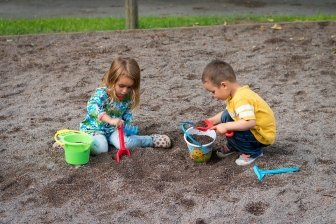
Helpful tips for physically and mentally healthy kids
ARTICLE | Health | January 27, 2020 10:12 AM | By Misha Yueng

When a child has healthy habits at a young age, their chances of growing up and maintaining good health are much higher. A recent set of recommendations issued by the World Health Organization offers evidence-based guidelines for parents. Here are some tips on how much exercise, sleep and screen time children of different age groups should have in order to be physically and mentally healthy.
Babies
Babies younger than three months need 14 to 17 hours of sleep every day, including naps. Those three to 12 months need up to 16 hours per day, including naps. While a baby is awake, they should be placed on their tummy for at least 30 minutes per day. Tummy time helps a baby’s vision and muscle development. Babies should not be restrained in a car seat, high chair, sling, stroller or wrap for more than 60 minutes at a time. Children under one year of age should not have any screen time.
Children Ages One and Two
Children ages one and two need at least 11 to 14 hours of sleep every day. This includes nighttime sleep and one or two naps. Kids these ages also need to spend at least 180 minutes per day engaged in active play. They don’t need structured exercise, but they do need to move their bodies. Some active play ideas include splashing in a swimming pool or splash pad park, going on a walk through the park and picking up neat sticks or stones, swinging or sliding on a playground and taking the dog for a walk. Children ages one and two should not spend more than one hour at a time restrained in a car seat. One-year-olds should not have any screen time. Two-year-olds should have less than 60 minutes per day of screen time.
Children Ages Three and Four
Children ages three and four should be limited to 60 minutes or less of screen time every day. Kids these ages need an average of 10 to 13 hours of sleep every night. For some kids, 10 hours of sleep at night and a 90 minute nap during the day works well. Three- and four-year-old children should spend at least 180 minutes every day in active play. At least 60 of those minutes should be in moderate to vigorous activities. Some examples include bouncing on a trampoline, riding a bike, running on the playground or bouncing in an inflatable bounce house.
Tips for Making Changes At Home
If your four-year-old is used to spending six hours per day using a screen, switching to one hour or less per day is a big undertaking. A child might throw a tantrum or otherwise be resistant to this sudden change. Parents should avoid making the changes seem like a punishment. Instead, turn the changes into something fun for the child. Sleep and nutritious food should always be the top priority for youngsters. Most of the rest of a young child’s time should be filled with active play and learning. On weekends, parents can put away the devices, including their own smartphones. Some good active and learning activities include going on a walk to the park, visiting a nature center, going to a science museum, playing at a friend’s house and having a Wii Fit or dance party in the family room.